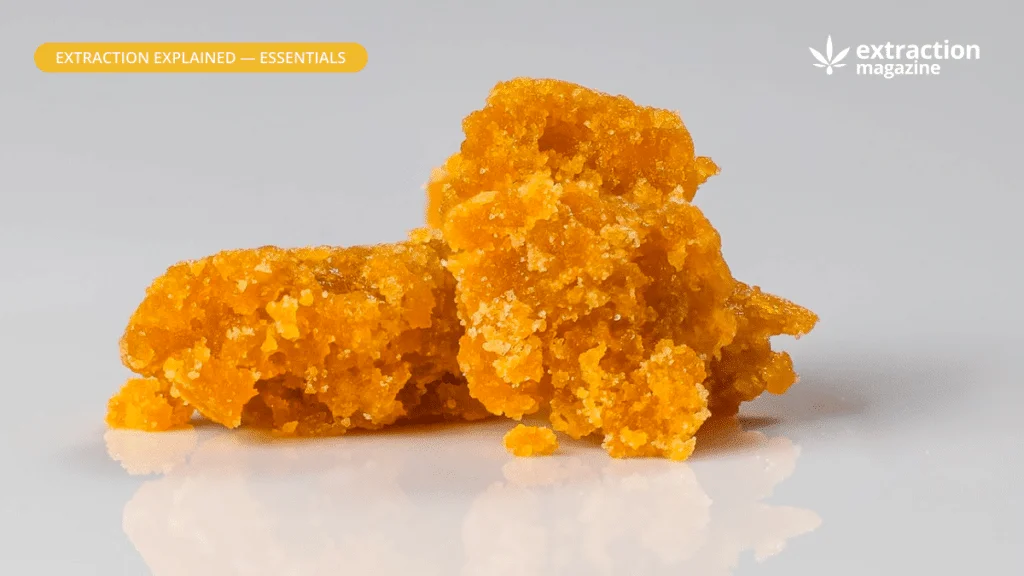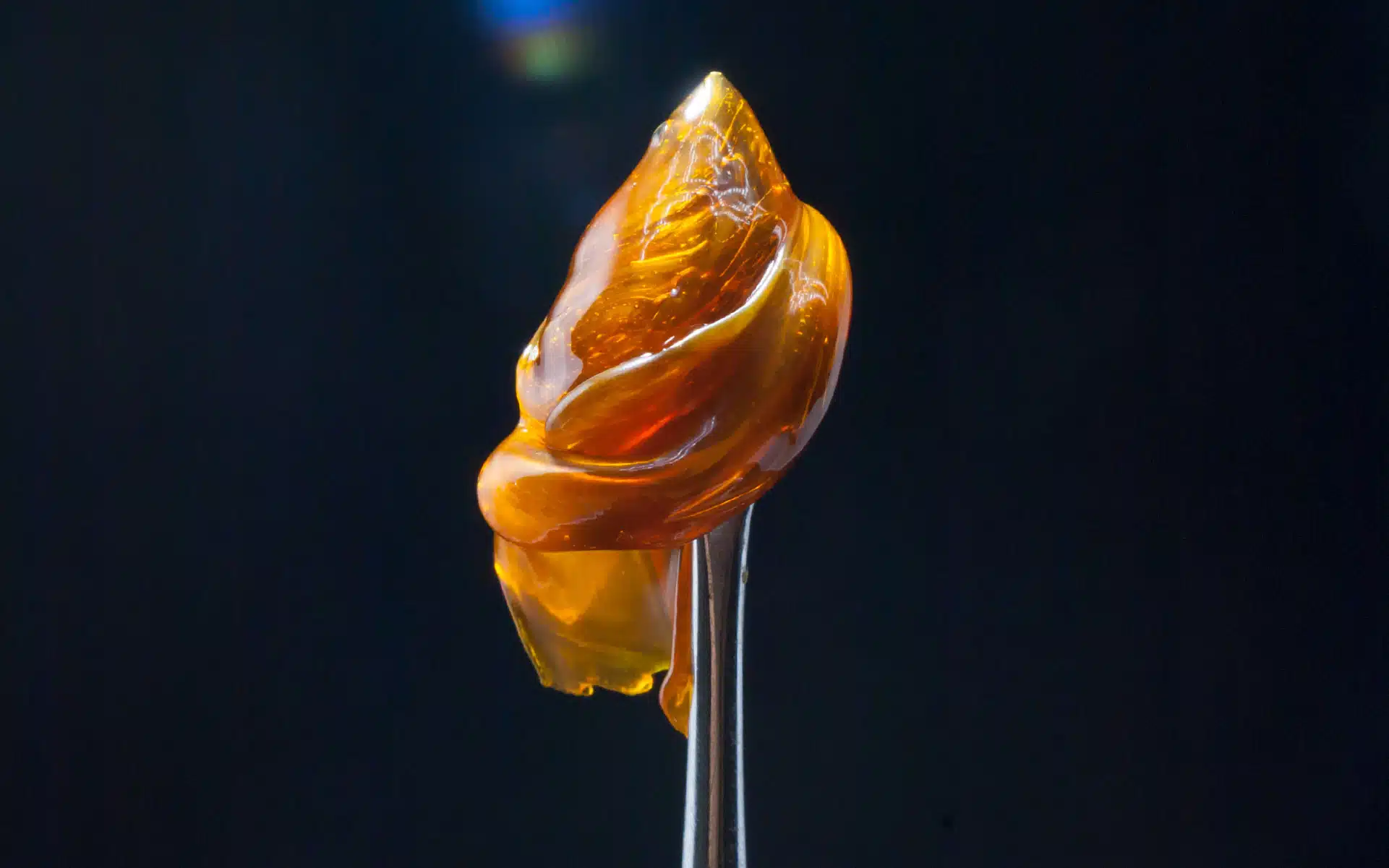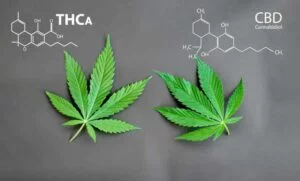Whether you are an aspiring cannabis producer or a consumer, solvent vs solventless is a choice that you may have faced. In cannabis extraction, the use or absence of solvents determines the quality, potency, and safety of concentrates.
This guide explores the key differences between solvent and solventless cannabis extraction, focusing on how each method impacts quality, potency, and safety. We’ll dive into the processes, benefits, and potential drawbacks to help you make an informed choice.
Sections
ToggleUnderstanding Cannabis Concentrates

Cannabis concentrate is a highly potent residue of cannabinoids like THC and terpenes. To produce cannabis concentrate, the plant material is first dried and then cured using different methods that can be solvent-based or solventless. Cannabis concentrate is used in various forms, including oils, waxes, and crystals. The choice of extraction method to create these concentrates significantly impacts the final quality and characteristics, including potency, flavor profile, and overall quality.
In the cannabis industry, producers choose between solvent vs solventless extraction methods depending on what end products they are producing and what characteristics they expect in their product.
What is Solvent Extraction?
Solvent extraction is a method that uses chemical solvents to extract desired compounds from cannabis plant raw material. In the process, the plant material is soaked in solvent, which dissolves the cannabinoids and terpenes. The solution is then separated from the residue plant material and heated to evaporate the solvent. The cannabis concentrate is left behind.
The most common solvents used in cannabis extraction include butane, propane, ethanol, and supercritical CO2. The solvent extraction equipment is a closed-loop system that repeatedly passes the solvent through the plant material, dissolving desired compounds. The resulting solution is then processed in a separate chamber, removing the solvent and leaving behind a concentrated extract.
In the cannabis industry, solvent extraction is preferred for its efficiency and ability to produce high yields. Several popular cannabis products are made using this method, such as Butane Hash Oil (BHO), Rick Simpson Oil (RSO), and CO2 Oil. These products are available in various consistencies such as shatter, wax, and budder and are known for their purity.
What is Solventless Extraction?
Solventless extraction, as the term suggests, is the method that does not use any chemical solvents to separate cannabinoids and terpenes from the plant material. This technique relies on the physical properties and uses pressure, heat, or filtration to create concentrates. Producers favor Solvent extraction for its simplicity and high purity, as no residue solvent exists.
The process of the solventless cannabis extraction method depends on the specific technique used. For instance, in the Rosin Press method, heat and pressure are applied to cannabis flower or hash to squeeze out a resinous extract. It uses a simple mechanical device with metal plates. Ice water extraction is another popular solventless method used to create bubble hash. It utilizes cold water and agitation to separate trichomes from plant material.
Some of the most popular solventless extracts include rosin, which can be pressed from flower, hash, or kief; cannabis dry sift, a fine powder of trichome heads collected through screening methods; and bubble hash, produced through ice water extraction.
Solvent vs. Solventless Extraction: Key Differences

There are several key differences between the two, and there are safety and environmental impacts of both methods. Here are the solvent vs. solventless differences to consider:
Solvent-based Methods | Solventless Methods |
Typically require more complex equipment | Simpler extracting using more accessible tools, such as rosin presses or ice water extraction bags |
Stricter safety protocols due to the use of potentially flammable or chemical solvents | Easy to get started due to less restrictions |
Solvent extraction is more efficient for large-scale production | Solventless methods may be more time-consuming but offer a hands-on, craft approach |
Solvent-based extraction requires post-processing to remove solvent contaminant | Purity of solventless cannabis product is perceived cleaner due to no chemical solvents |
Solvent disposal and chemical waste management are essential to prevent environmental contamination | Solventless methods are often more environmentally friendly, with minimal waste and no chemical runoff. |
Solvent-Free Extraction Explained

Solvent-free extraction is the post-processing step involved in the purification of solvent-extraction products. It is often confused with solventless extraction methods, but it is a post-processing method rather than extraction itself. It removes all traces of the solvent from the final product. On the other hand, solventless cannabis extraction never involves the use of solvents at any stage.
Distillates are often considered solvent-free products because they use the distillation process to remove residual solvents and other impurities. Examples of solvent-free extracts include highly refined cannabis distillates and some crystalline isolates. Mainly used for medicinal purposes, these cannabis products undergo extensive purification to remove all traces of solvents. The resulting clean final product is solvent-free but not produced through solventless extraction methods.
Advantages and Disadvantages of Solvent-Based Extraction & Solventless Extraction
Your choice of cannabis extraction method must be well-informed. Consider the pros and cons of solvent-based and solventless extraction methods that we have listed:
Solvent-Based Extraction:
Pros:
- Due to its ability to dissolve cannabinoids and other desirable compounds, solvent-based extraction results in high efficiency and scalability, suitable for large-scale commercial production
- Capable of producing high yields of cannabis extract from plant material
- Producers can produce various product consistencies and formulations using different solvents, making the process highly versatile.
- Highly selective solvents can selectively extract specific compounds.
Cons:
- Most solvents are potentially flammable or harmful chemicals
- There is a high risk of residual solvents in the final product
- Stricter regulatory requirements
- Higher costs for compliant equipment and facilities
- Not suitable for some volatile terpenes during the extraction process
Solventless Extraction:
Pros:
- Produces purest and cleanest cannabis extracts without the use of chemical solvents
- Minimal processing preserves a fuller spectrum of plant compounds
- No post-processing is required, making the process and product cheaper
- Eco-friendly and sustainable extraction process
- Natural or less processed products
Cons:
- The yield quantity is lower compared to solvent-based methods
- Due to the use of mechanical devices, the process can be more labor-intensive and time-consuming
- Commercial scale operations may require higher investment
- Product consistency can vary in potency and appearance
- Mechanical processes like rosin pressing can lead to more wear on equipment over time, adding to long-term maintenance costs.
Which Extracts Are the Cleanest?
Consumers and regulatory authorities are high emphasis on the purity of cannabis products. Solventless cannabis extraction methods are regarded as the most reliable for producing clean cannabis products. The absence of solvents in the extraction process eliminates the risk of any residual solvents. That’s why solventless extracts like rosin, ice water hash, and dry sift are prized for their purity. These cannabis products contain only the natural compounds extracted from the plant without any external chemical contaminants.
In the consumer community, solventless products are preferred, particularly for medical purposes, due to their natural and unadulterated formulation.
Does that mean solvent-based products are not clean?
Not particularly. While there is a risk of residue solvent in the cannabis content, skillful producers use high-quality post-processing methods to achieve the same level of cleanliness. Proper processing and purging techniques are crucial for producing high-quality solvent-based extracts.
As a consumer, if you are buying solvent-based cannabis products, ensure that they have undergone thorough solvent removal. Look for the expertise of the extractor and the rigorous testing protocols implemented to ensure all residual solvents are below acceptable limits. We also recommend preferring products that provide third-party lab testing results.
Which Extracts Are More Potent?
The potency of the cannabis products depends on two factors:
- The potency of the plant strain and quality of the source material
- The extraction method used
A comparison of more than a simple solvent vs. solventless is required to decide which extracts are more potent. Let’s take a closer look at what factors determine the potency of extracts.
Solvent-based extraction methods can produce higher yields in terms of total cannabinoid content. Solvents used in the process are highly efficient at stripping cannabinoids and other compounds from plant material. This is why solvent-based cannabis concentrates can have THC levels that can exceed 90%. Further refining with distillation techniques can create products with even higher purity.
Solventless cannabis extraction can produce more potent concentrates, but the levels of cannabinoid concentration may be lacking. Solventless cannabis products are known to have full-spectrum profiles, preserving a more comprehensive range of cannabinoids and terpenes in ratios closer to those found in the original plant material.
Another aspect of the extraction method’s impact is the cannabinoid and terpene retention in the final product. Solvent-based extraction methods can be highly selective and beneficial for medicinal and therapeutic applications but compromise the terpene profile. Solvents can target specific compounds but also destroy some volatile terpenes. On the contrary, solventless methods can’t be as selective but can preserve a more complete terpene profile.
The takeaway here is that the potency of the cannabis concentrate’s potency is not solely determined by THC content. The entourage effect or the “high” results from multiple cannabis compounds working synergistically. This makes full-spectrum solventless extracts offer some users a potentially more compelling experience.
Which Extraction Method is Better for Business?
From a business perspective, aspiring entrepreneurs can consider both solvent and solventless extraction. But the choice must depend on these factors:
- Cost: Solvent-based extraction will require a higher investment in equipment and compliance but has a lower operating cost at scale. Solventless methods often have lower startup costs due to the simplicity of the equipment but can be more labor-intensive, resulting in high operating costs.
- Scalability: Solvent extraction is more scalable for large-scale production. Most equipment can be scaled to increase production. Solventless methods use simple mechanical extracts that can be challenging to scale up while maintaining quality and efficiency.
- Consumer Demand: The demand for solventless extracts is growing, particularly among connoisseurs and health-conscious consumers. However, solvent-based products are still dominant in the market in terms of volume.
- Market Trends: The push for “clean” and “natural” products in the cannabis industry favors solventless extraction. However, innovation in solvent-based methods is also driving the development of new and unique equipment.
Let’s consider the pros and cons of both business methods.
Pros of solvent extraction:
- Higher yields and efficiency
- Greater scalability
- Lesser operational expenses
- Versatility in product types
Cons of solvent extraction:
- Higher regulatory hurdles
- Potential safety concerns due to handling of chemicals
- Less appealing to “natural” consumer
Pros of solventless extraction:
- Low equipment investment to start
- Simple to operate with less skilled labor
- Appeals to a growing niche of discerning consumers
- Potential for premium pricing of products
Cons of solventless extraction:
- Lower yields
- More labor-intensive
- Challenges in scaling up production
- Limited product variety compared to solvent-based methods
The best extraction method depends on your target consumers’ scale of operations, long-term goals, and preferences.
Choosing the Best Extraction Method for Your Needs
We can’t explicitly term one method better than another; selecting the best extraction methods depends on your business model and needs. Here are some essential considerations:
- Safety: If safety and compliance concern you, avoid chemical solvents and focus on solventless extraction methods.
- Purity: Producers can achieve a high level of purity in the final product using both methods, but solventless cannabis products are often perceived as purer.
- Potency: For maximum THC potency, solvent-based methods are most suited. If you want to produce full-spectrum products, solventless methods may be preferable.
- Cost: Initial investment and ongoing operational costs will be associated with both methods. At the same time, solvent-based extraction has a higher upfront investment but can be more cost-effective at scale. If you don’t need high production, solventless extraction is better due to lower starting costs.
- Market Demand: It depends on where your business is based. Research your target market to understand consumer preferences in your area.
Here are some real-life applications of each extraction method.
- Home extraction: For enthusiasts, solventless methods like rosin pressing are safer and more accessible for personal use. You can achieve it using a simple hair dryer.
- Small-scale craft production: Solventless techniques can differentiate your brand in a crowded market with more purity.
- Commercial production: Solvent-based extraction methods are viable for large-scale commercial operations due to their scalability and efficiency.
- Medical-grade extracts: Both methods can be suitable. Solvent-based extraction offers precise control over final product composition, while solventless extraction helps maintain the complete profile of terpenes.
Conclusion
The debate between solvent vs. solventless cannabis extraction rests on what your end goals are. Both extraction methods offer unique advantages and challenges. Solvent-based extraction provides efficiency and scalability that are suitable for large-scale production. Solventless cannabis extraction, while hard to scale, provides a more natural process and potentially purer product.
Innovations in solvent-based techniques focus on safer solvents, and advancements in solventless technology increase yields and scalability. Your business model, target market, and commitment to quality and safety should guide your choice.




